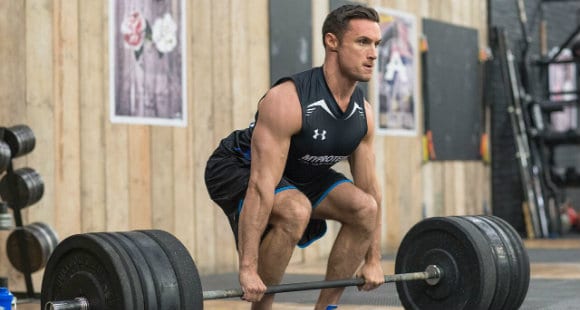By the healthiergang writer , student of Exercise, Sport and Health Sciences.
Training frequency
La frequency is one of the main variables of training along with volume, intensity (load) and density.
By (specific) training frequency is meant the number of times a particular muscle or muscle group is trained / stimulated within the single micro-cycle.
Do not confuse the specific frequency with the global frequency, which indicates the number of total workouts within the micro cycle, regardless of the muscle groups involved.
monofrequency (purely theoretical concept) we intend to train a muscle group only once in the micro cycle.
In multi-frequency, otherwise, the same muscle group is trained several times.
Nowadays, multi-frequency, in the fitness field, is certainly underestimated.
In fact, most users tend to train in single frequency, preferring split routines, where the main goal is to "isolate" the target muscle groups as much as possible, accumulate a good amount of work, create an important local stress searching for the maximum congestion of the trained muscles and then let them recover abundantly, practically until the next micro cycle (generally 7 days).
Although it would seem a fairly popular method among bodybuilders, the monofrequency, to be effective, requires an important neural activation, an adequate capacity to recruit motor units, as well as good levels of strength. You have to give everything right away, no distractions are allowed.
We understand very well that they are not suitable workouts for everyone, hardly beginners, or in any case intermediate, would be able to fully exploit these methods.
Tone
In multi-frequency, in the single session, the maximum exhaustion and muscle damage, typical of the single frequency, should not be sought. The stimulus must be well calibrated, training but not exasperated. To convey the idea, a “Touch (strong) and escape”.
The lesions of the sarcolemma, the activation of biochemical responses on site, the action of the various pro-inflammatory cytokines, the stimulation of satellite cells, are just some of the factors involved in the stimulation of the hypertrophic response.
Multi-frequency training works "by accumulation“, That is to accumulate a good amount of total work in the micro cycle. The accumulation of work induces certain gene responses by the organism, capable of generating hypertrophic adaptation.
The structure is at the service of the function. An increased need for work leads to a dimensional increase.

A very important aspect of multifrequency concerns the assimilation of the motor gesture.
By training (and therefore repeating) a certain gesture / exercise / motor pattern with greater frequency, the Nervous System is able to assimilate it more effectively and quickly.
Repetitiveness allows for a plurality of experiences, resulting in enrichment of the subject's motor baggage. In doing so, the motor programs will increasingly consolidate, favoring the motor learning process.
This turns out to be the basic principle for the increase in strength, refinement of the technique and the progression of the loads, all factors that will have an important TRANSFER on the hypertrophic gains.
It is well known [1] that, following an adequate training stimulus, the local muscle protein synthesis (MPS) would tend to increase rapidly, reaching its peak around the 24-36 hours post-exercise, to undergo a rapid decline and return to initial levels within about 48 hours. Various hormones and growth factors (GH, IGF-1, etc.) are secreted and released, affecting protein turnover [2].
This could be a point in favor of multi-frequency, even if a fairly recent review [3] would seem to show no direct correlation between acute MPS increase and hypertrophic gains, therefore increase in muscle mass in the medium to long term. The hypothesis of an acute rise in systemic hormones is also fallacious. The effects on muscle growth would seem negligible [4].
Studies
There are several works in the literature that aim to analyze the effects of the different training frequencies on any gains in muscle mass.
A very recent Systematic Review and Meta-Analysis by Schoenfeld BJ and colleagues [5], certainly the most important scientific document on the subject, tries to shed some light on it.
A total of ten studies were considered, in accordance with the inclusion criteria: equal training volume; healthy individuals, free of any chronic disease or injury.
From what emerged, there would seem to be advantages in favor of multi-frequency, as regards the gains of muscle hypertrophy.
The specific "ideal" frequency would appear to be two, ie training a muscle group twice within the micro cycle.
In a certain sense, the outcome is predictable, according to what was inferred from a previous controlled trial on trained subjects [6].
Whether training a muscle group more than twice a week is more beneficial remains to be determined.
However, it should be borne in mind that, considering the various papers published in recent years [7] [8], it would seem that the specific volume, probably more than the other variables, is the most determining factor for what concerns muscle hypertrophy.

It is observed that, by equating the specific volume in the micro cycle, even by adopting completely different frequencies [7] and intensity of load [8], the differences in terms of lean mass variations are practically negligible.
There are several studies that compare different resistance training programs, adopting different load intensities (and specific volumes) [9] [10] [11]. THE hypertrophic gains, therefore, variations in muscle mass are always very similar between the different groups compared. This would seem to show that any training protocol, regardless of load intensity and volume, would lead to the same results. From the “everything works!” Series.
Clearly, these studies also have their limitations, not equating either the specific volume or theload intensity, the variable control is not optimal, therefore it is difficult to extrapolate a cause-effect link between a variable X and any gains in lean mass.
Conclusions
It is probably true that everything works, the only certainty we have is that there is no best protocolnor, much less, the magical method. The key is always to vary (intelligently) the different parameters.
La specific frequency, as well as volume and intensity (but not only), must be adequately cycled and modulated from a medium-long term planning perspective (mesocycle, macrocycle). The secret is that there are no secrets. If you are wondering which is the optimal frequency, perhaps more effective than others, the answer is simply NONE!
What is certain is that if you don't train, you will hardly grow. Again, as always, to get results the only real strategy is to build the deck!


























